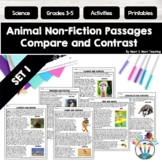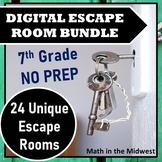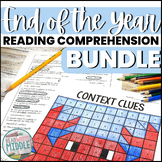39 results
7th grade astronomy simulation microsofts

Tides Lab Using Water Balloons - Hands On Experience That Kids LOVE!
This lab is a really fun way to use discovery and investigation to teach students how gravity and inertia cause tides, along with the moon. The cost is low (a package of water balloons and yarn) and it is a great activity to get kids moving and outside. They work in small groups and go through a series of steps and procedures and record data. This was one of the most fun labs of the year for students and was instrumental is having kids understand why we have high tides on the side of the Earth c
Subjects:
Grades:
6th - 12th
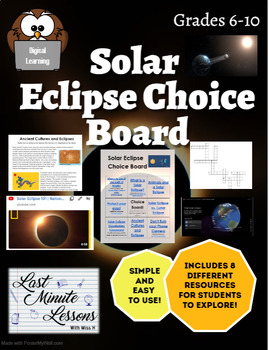
Digital Resource: Solar Eclipse 2024 Choice Board and Resources
Includes links to articles, videos, images, and simulations for students to explore as they learn about the solar eclipse. Topics covered in the choice board include:- What is a solar eclipse?- Protecting your eyes- The path of totality- How animals react- Solar vs. Lunar Eclipse- Digital vocabulary crossword puzzle- Ancient cultures and the solar eclipse- How to safely use your phone to take a picture
Subjects:
Grades:
6th - 10th
Types:

Constellations Lab
I was about to lecture on constellations this year and realized that perhaps the students could teach themselves by using Stellarium-web.org, where they can move and manipulate the sky. I created this worksheet/guide for them to follow! It worked great and they enjoyed it. I had to give them some verbal help, but overall it was much more effective than a lecture. You will need computer access for your students, although you could do it as a demo on a smartboard but that would be less effecti
Subjects:
Grades:
7th - 12th, Higher Education, Adult Education, Staff
Types:
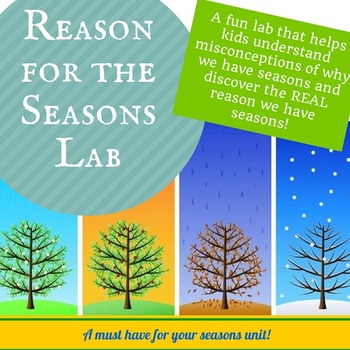
Reason for the Seasons Lab
This lab is suitable for students from grades 5-8 and addresses the following learning goals:
I can survey a group of people to collect data
I can tally data and organize by main idea
I can create a bar graph or pie chart with the data I collect
I can model how the Earth experiences seasons
I can model what would happen if the Earth did not have a tilt
I can describe how seasons in the Northern Hemisphere differ from seasons in the Southern Hemisphere through the year
Materials:
This document,
Subjects:
Grades:
5th - 8th
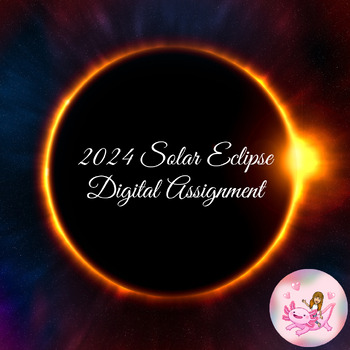
2024 Solar Eclipse Digital Assignment
This digital assignment assists students in understanding what an eclipse is and the different types of eclipses' as well as how they can happen. The assignment also cover the safety of wearing appropriate eye protection while viewing the eclipse. The reading portions of this assignment were pulled from NASA and are followed with comprehension questions to check students' knowledge on the reading. There is also an interactive link provided in which students can get a visual of the pathway the to
Subjects:
Grades:
7th - 10th
Types:
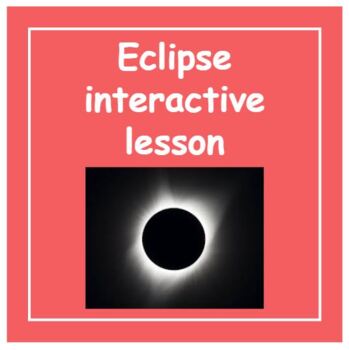
What is an eclipse? Interactive Lesson (works as sub plans, too)
This interactive lesson teaches students about eclipses. Students engage with two interactive websites using this resource. Students will even run a simulation to see what the Solar Eclipse of 2017 looked like from their location. The write-up has students working individually as they engage with two interactive websites. This activity also pairs nicely with an interactive Pear Deck slide show as a follow-up that I also have available in my Teachers Pay Teachers store both separately and as
Subjects:
Grades:
6th - 12th
Types:
NGSS:
MS-ESS1-1
Also included in: Eclipse interactive lesson and practice problems
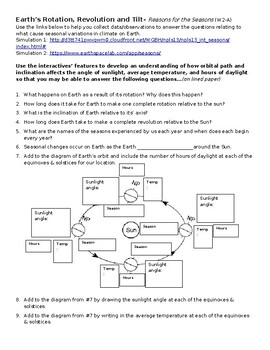
Rotation, Revolution and Reason For The Seasons
NGSS Performance Expectation:MS-ESS1-1 Develop and use a model of the Earth-sun-moon system to describe the cyclic patterns of lunar phases, eclipses of the sun and moon, and seasons.This interactive will allow students to begin to visualize what causes our seasons and what causes the time periods we experience such as days, and years. Students will look at Earth's orbital position, light angle, temperature, day length, and position of sun above the horizon to study and explain the seasonal vari
Subjects:
Grades:
6th - 8th
Types:

Universe Timeline - A brief history of 6 billion years
This activity introduces students to the major events that the majority of scientists agree occurred in the history of our universe. It extends from the formation of our solar system and ends with the evolution of humans and their migration across our planet.
Students need to identify the major events, chronologically order them, and then create a scaled timeline which lists these events. This lesson helps students visualize the major events as well as recognize trends in the order and timing
Subjects:
Grades:
7th - 10th
Types:

Gravity and Orbits PhET Exploration
Students will work collaboratively to explore how gravity affects orbits using a PhET simulation.Students will develop a Claim - gather Evidence - and provide Reasoning.MS-ESS1-2. Develop and use a model to describe the role of gravity in the motions within galaxies and the solar system.
Subjects:
Grades:
6th - 9th
NGSS:
MS-PS2-4
, MS-ESS1-2

Mars Retrograde Motion
This XplorePak features a realistic animation that allows the user to visualize the apparent retrograde motion of Mars over a series of several months. The simulation is controlled by a slide mechanism allowing the user to move the Earth and Mars around the Sun over a period of 9 months.
Subjects:
Grades:
7th - 9th
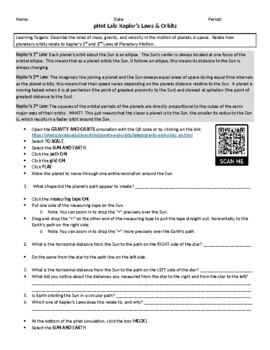
Kepler's Laws Worksheet for pHet Simulation
Students use this worksheet to guide them through an exploration of Kepler's 1st and 2nd Laws with the pHet simulation for Gravity and Obits.
Subjects:
Grades:
7th - 8th
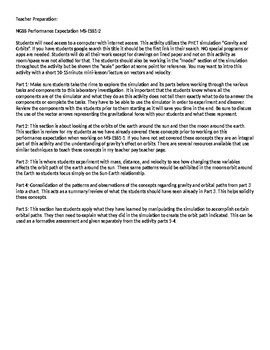
Gravity and Orbits Simulation Investigation
This resource is a way in which students can work with an online simulation/interactive through PHET and explore how/why gravity affects orbital paths. This interactive allows students to visually see how gravity impacts orbits by experimenting with factors such as mass and distance then modeling how these impact orbital paths of solar bodies. Your students will be asked to manipulate, model, and explain while participating in this activity.Covers NGSS Performance Expectation:MS-ESS1-2: Develop
Subjects:
Grades:
6th - 9th
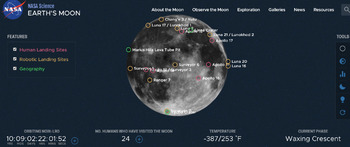
Distance Learning- NASA Moon Simulation Explore Sheet
With the self-guided explore sheet students are able to investigate the Moon! Using NASA's Moon interactive simulation and the Explore sheet kids are guided to investigate everything from Moon phases to major landforms!
Subjects:
Grades:
4th - 12th, Higher Education, Adult Education
Types:
NGSS:
MS-ESS1-2
, MS-ESS1-3
, MS-ESS1-1

Animated Solar System
Great & Fun Activity! How big is our Solar System? This activity will amaze your students. This is a class activity and is best done outdoors. Can be done in long hallways as well.The planet cards should be printed in color and then laminated. The Power Point should be presented before the activity to provide a basis for understanding the activity better. Song mnemonic provided as a fun way to help them remember the distances between the planets. Enjoy!
Subjects:
Grades:
4th - 12th, Adult Education
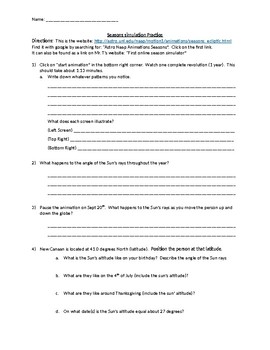
Seasons online simulator
This worksheet walks students through the following online simulator. Students explore the various screens and look for patterns that explain why seasons occur and what can be observed throughout the year.
Subjects:
Grades:
6th - 12th
Types:
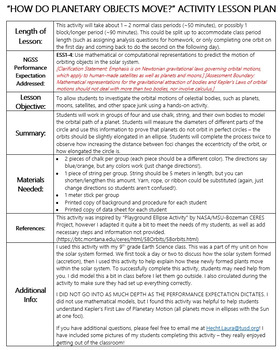
"How Do Planetary Objects Move?" - Ellipses Activity
Are you struggling with engaging your students in understanding how bodies move in our solar system? LOOK NO FURTHER!This activity is great for modeling orbits of planets, moons, and satellites. Ditch that old activity where students use pushpins and sit at their desks. This activity gets students up, outside, and actively engages students in learning! No boredom here!Students will work in groups of four and use chalk, string, and their own bodies to model the orbital path of a planet. Students
Subjects:
Grades:
7th - 11th
NGSS:
HS-ESS1-4
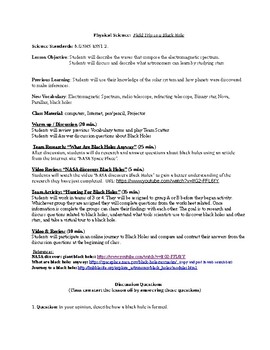
Journey to a Black Hole
Students take an incredible interactive virtual journey using NASA's space website to visit black holes and discovery the mystery behind these powerful dying stars. On their journey, students will discover and use tools used by scientist to explore the universe around them. Once they have documented their findings, students will begin a virtual journey to a black hole (Cygnus 1 or Andromeda). This product comes with a lesson plan with all the references and links to the websites that will be use
Subjects:
Grades:
4th - 12th
Types:
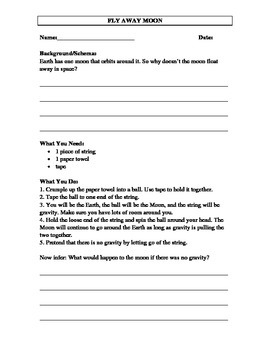
Gravity Experiment - Fly Away Moon
This is a hands-on activity/experiment to an introduction to gravity. I use this in my space unit for Science. It's only 3 materials so it's very convenient and the kids just love it. I wrote the instructions in a step-by-step format so the students can either do it independently or in groups. (I do groups of 5.) Or you can read the steps aloud and walk them through it to differentiate. There are 2 open-response questions for students to answer. I also take pictures of them doing it for the par
Subjects:
Grades:
3rd - 7th
Types:
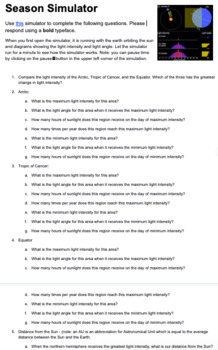
Season Simulator
This is a student guide for an online season simulator. Students will be guided through the different parts of the simulation and learn about Earth's Seasons resulting from the changing light intensity due to the changing sun light's angle.
Subjects:
Grades:
7th - 12th
Types:
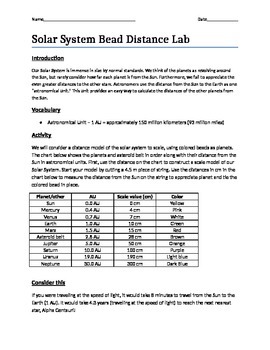
Solar System Scale Lab
Students will create a model of the solar system using a long piece of string and beads. The different color beads represent the sun, planets, and asteroid belt. The purpose of the lab is to demonstrate a scaled down version of the size of our solar system and how far away each planet is from each other.
Subjects:
Grades:
4th - 12th
Types:
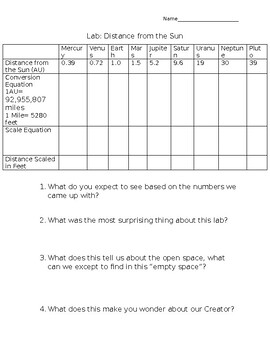
Distance from the Sun Lab
Lab for Junior High students to model the distance planets are from the Sun and each other. This lab also has Christian elements by asking the students to answer what this makes them wonder about their Creator.
Subjects:
Grades:
5th - 9th
Types:
NGSS:
MS-ESS1-3

Computer Simulation - Phases of the Moon
This is a nice one class period computer tutorial over the Phases Of The Moon. My worksheet will guide students through the simulation.
Subjects:
Grades:
7th - 12th
Types:
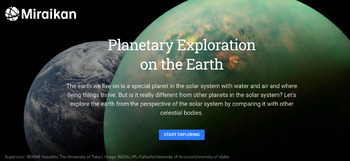
Distance Learning- Google Earth Planet Exploration Explore Sheet
Take your students on a virtual journey with Google Earth and the planets! This Self Guided Explore sheet will bring your students through a comparison of features of other planets through Earth! Filled with inquiry-based questions and instructions!
Subjects:
Grades:
4th - 12th, Higher Education, Adult Education
Types:
NGSS:
MS-ESS1-4
, MS-ESS2-3
, MS-ESS2-2
, MS-ESS1-2
, MS-ESS1-3
...
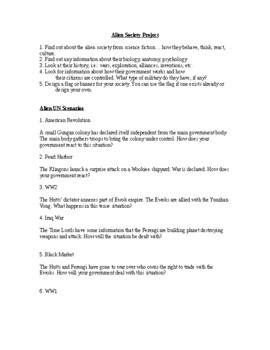
Alien Socities and UN Debate project
Have students that are interested in science fiction or aliens? Teaching history or science/biology? Why not combine the two.In this project, students will work together to research science fiction alien cultures and then come together to make a galactic UN. The teacher will then lead the class in discussions of real Earth events and students must discuss the topic and answer how their race would react to the historical event. Bonus points if they can dress up as their species.
Subjects:
Grades:
6th - 8th, Higher Education
Types:
Also included in: Life, Aliens, and Historical Events
Showing 1-24 of 39 results




